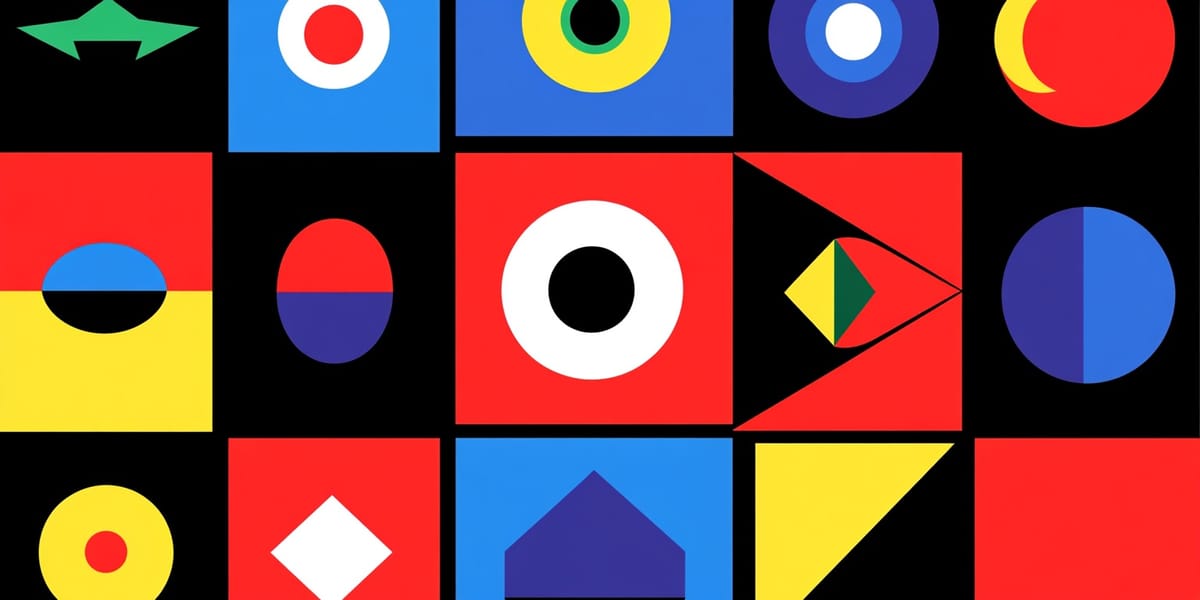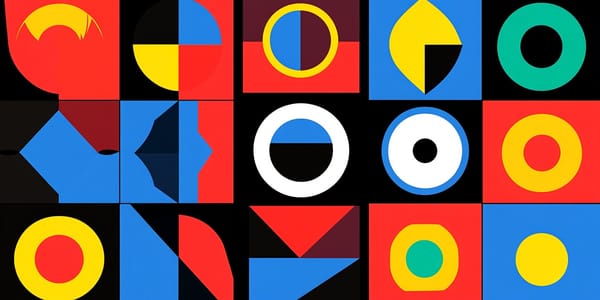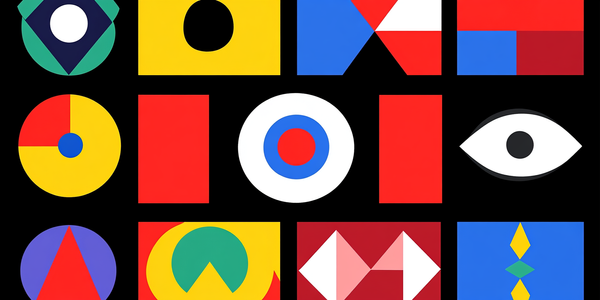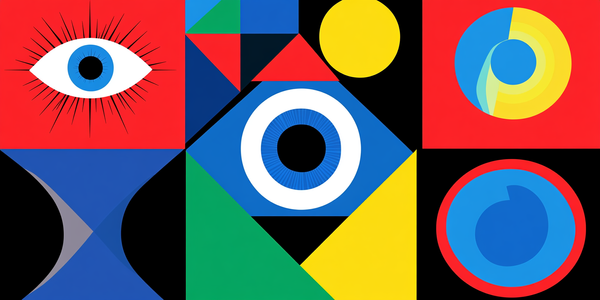Long-Term Fulfillment vs. Short-Term Engagement

Hi! I'm David, co-founder of Napkin. You receive this email because you signed up directly or through Napkin. I explore technology that enhances our humanity rather than diminishes it. Technology that champions compassion, preserves dignity, and maximizes well-being.
From Instant Gratification to Lasting Fulfillment
If you are like most people, you check your phone 100 times a day. Each notification was a tiny hit of dopamine, a moment of feeling connected. But at night, lying in bed, you felt empty. Something was missing.
This is the story of our digital age: We've mastered capturing attention but forgotten how to create meaning. The most successful apps keep us clicking, scrolling, tapping – achieving impressive engagement metrics while leaving us feeling hollow.
The opportunity isn't in producing more moments of shallow engagement. It's in designing digital experiences that help people become who they want to be.
The most successful digital products optimize for short-term engagement. They provide quick dopamine bursts from likes, notifications, or easy wins. Social media hooks us with instant gratification and minimal effort, achieving 30-day retention rates above 70%. Sam Harris remarked about X that it creates a "digital serpent" that segments our days into fragments. It interrupts us "not just every hour, but maybe every five minutes" with their algorithmic scroll. Compare that with the old days when people waited up to a week for the next Time Magazine to update them on the state of global affairs. The shorter the information's relevance, the more pseudo-information it is, and systems optimizing for short-term attention parasitize our learning instinct. These platforms hijack our innate drive for learning, feeding us informational junk food that satisfies our curiosity just enough to prevent us from seeking real nourishment. After twenty two-minute hits of X throughout the day, picking up a book in the evening becomes increasingly unlikely.
By contrast, apps aimed at positive change (health, learning, etc.) often see dismal 30-day retention (~3% on average). The challenge is clear: how can we design experiences that keep people committed for the long haul, fostering behaviors aligned with their values and well-being? This requires a shift: from exploiting our basest impulses to cultivating our capacity for delayed gratification – the very foundation of human flourishing. The question isn't how to keep users engaged, but how to help them become who they want to be. A range of examples – from habit-change apps and support groups to therapeutic practices and even ancient rituals – offer insight into design mechanisms that support sustained, meaningful engagement. Below, I explore best practices and case studies, highlighting nudges, rituals, structures, rewards, and social reinforcements that help people stay on track with self-improvement and personal transformation.
Digital Tools and Apps for Long-Term Habits
Before discussing design patterns, we should acknowledge what's at stake. The attention economy isn't merely inconvenient – it's hostile to human flourishing. When our days are fragmented by notifications and our goals shaped by algorithmic engagement, we're not just wasting time. We're training ourselves to be reactive rather than reflective, impulsive rather than intentional. We're becoming less free.
Digital products can help build lasting habits and personal growth – if designed with the right principles. Modern habit-tracking apps illustrate several best practices:
- Gamification with Purpose: Habitica is a habit tracker that turns self-improvement into a role-playing game. Users earn XP and gold for real-life tasks while losing health for bad habits. What makes this work isn't the gamification, but how it transforms abstract goals into tangible progress. Crucially, Habitica avoids public leaderboards – it's about competing with yesterday's self, not others. The insight: game mechanics can serve self-improvement when they align with intrinsic rather than comparative motivation.
- Streaks and Consistency: Habit apps like Streaks (iOS) illustrate the “don’t break the chain” technique by tracking consecutive days of an activity. These apps leverage the psychology of consistency – users develop a reluctance to break their streak, nudging them to maintain the habit daily. The minimalist design puts the streak count front and center as a reminder of one’s long-term commitment. Research on behavior change emphasizes setting achievable short-term goals to build self-efficacy – a streak is essentially a string of tiny goals (“Just do it today”) that accumulate into a routine. However, effective streak design includes gentle recovery mechanisms (like allowing an occasional break or “free pass” day) so a single lapse doesn’t demoralize the user.
- Mindfulness and Mental Health Apps: Apps like Headspace and Calm take practices with proven long-term benefits (meditation, deep breathing) and make them accessible daily. Their design combines guided structure (e.g. a 30-day meditation course) with user autonomy in choosing sessions, and uses lightweight tracking (streaks or total minutes meditated) to reinforce regular practice. The outcomes speak to fulfillment: even brief daily meditation significantly reduces stress and improves well-being. One study found that 10 days of Headspace reduced stress by 14%, while an 8-week Calm trial led to drops in perceived stress and boosts in mindfulness and self-compassion among college students. The key design elements enabling these results are guided rituals (short daily exercises), positive feedback (so users feel progress, not “failure”), and a non-intrusive, calming UI that aligns with the app’s purpose (reducing anxiety).
- Journaling and Note-Taking Tools: Digital journaling apps foster reflection and meaning over time. They often include prompts or templates (for gratitude, goal review, etc.) which nudge deep thinking. Journaling is a proven long-term practice: expressive writing can decrease anxiety, improve mood, and yield physical health benefits. Studies show that people who journal about their thoughts and goals report fewer stress symptoms and doctor visits. Journaling tools that encourage routine (e.g. daily reminder notifications) and offer privacy/security can help users commit to this personal growth ritual. Some apps incorporate streaks or encouragements to write regularly, but the emphasis is on internal rewards: clarity, insight, and documenting one’s personal journey.
- Commitment Devices in Apps: A more “hard nudge” approach in digital tools uses commitment contracts to lock in long-term intentions. Apps like StickK and Beeminder allow users to pledge money that will be forfeited to a charity (or an “anti-charity”) if they don’t meet their goal. This leverages loss aversion and accountability: knowing that failure has real stakes can push users to stay on course. Research confirms commitment contracts can significantly boost success rates. One randomized experiment found that giving people access to a commitment device increased 6-month smoking quit rates by 40% compared to control groups . The design involves clear goal-setting, frequent self-monitoring, and sometimes a social component (a referee or friends who verify and cheer your progress). The best implementations use these high stakes as a last resort backstop while supporting the user with positive feedback and tips – to internalize the habit so external stakes aren’t needed.
Repairing your relationship is not magic – it's a skill. And you can learn it.
The Attune app is a speech-to-speech AI couples coach. Get on the list to get exclusive access to the beta.
Community and Social Support for Lasting Change
Community-based programs leverage social reinforcement and belonging to drive long-term commitment. Being part of a group with shared goals boosts perseverance, whether it’s fitness or recovery.
Alcoholics Anonymous (AA) exemplifies designing for long-term transformation via community. Its “product” is not an app but a framework: free meetings, peer sponsors, and the 12-step program. Research found AA to be one of the most effective paths to alcohol abstinence – in a 2020 systematic review, AA attendance was often more effective than clinical psychotherapy for long-term sobriety. Why does it work? A big reason is social reinforcement. Members share experiences and offer emotional support and practical advice, creating a sense of camaraderie. AA introduces structured rituals (e.g. tokens for milestones, opening/closing recitations) and roles (like becoming a sponsor to mentor newcomers) that keep individuals engaged and accountable over years. As one expert said, “If you want to change your behavior, find some other people trying to make the same change.” In design terms, AA provides a blueprint for leveraging identity and belonging: participants see themselves not as solo strugglers but as members of a recovering community, reinforcing their commitment to the group norms (sobriety). Digital products can learn from this by building communities or buddy systems around goals (e.g., a weight-loss app pairing users as accountability partners, or a study platform with peer study groups).
Fitness Tribes and Group Challenges: The popularity of group fitness programs like CrossFit and running clubs underscores how peer support and friendly competition drive long-term adherence. In CrossFit “boxes,” workouts are done in groups, everyone knows your name, and there’s a culture of cheering the last finisher – boosting motivation and accountability. Studies show strong social support increases exercise adherence. People are more likely to show up and stick to a regimen when they feel others are counting on them and enjoy a sense of belonging. CrossFit’s design incorporates shared rituals like group warm-ups, high-fives, and team competitions, creating a club-like atmosphere. This combination of structure and camaraderie yields fitter individuals and tighter social bonds. A digital analog is fitness apps like Strava, which mix personal metrics with social features – leaderboards, challenges with friends, clubs – turning solitary exercise into a community experience. The key is to tap into our natural inclination to sync with group norms and to use social recognition as a reward (e.g. your friends congratulate you on completing a run). When designed ethically (to emphasize encouragement over peer pressure), social features become a scaffold for long-term engagement.
Learning Communities and Coaching Networks: Long-term pursuit of skills or knowledge benefits from social structures. Consider Toastmasters International, a global club for public speaking. Its format – regular meetings, speeches, and feedback – creates a safe space for gradual improvement. The meetings and feedback loop keep members progressing in their speaking skills over months and years. Online, we see similar approaches in forums like the freeCodeCamp community for coding or language learning apps that have user forums and group competitions. Mentorship and coaching networks (such as online mastermind groups or platforms like BetterUp for professional coaching) further illustrate the value of social support. A coach or mentor provides accountability, celebrates milestones, and helps when motivation flags – essentially acting as a personalized “community of two.” In design, integrating mentors or moderators can increase retention (e.g., mental health apps with optional human coaches or community moderators). Social proof features can help, like showing users “Others like you have completed this 30-day challenge,” leveraging normative influence to inspire commitment.
Therapeutic and Behavioral Science Interventions
Evidence-based behavior change techniques from psychology can be translated into product features and user journeys:
- Cognitive Behavioral Techniques: Cognitive Behavioral Therapy (CBT) is structured around identifying unhelpful thought patterns and practicing healthier behaviors – essentially a long-term self-management skill. Digital mental health tools are incorporating CBT exercises like thought journals, mood tracking, and behavioral activation prompts. For instance, an app may nudge a user to log a negative thought and guide them to reframe it more positively (a common CBT exercise). By repeating this, users gradually rewire their thinking habits. The design principle is to break a complex internal change into bite-sized, repeatable actions (reflections, exercises) that can become routine. Some apps like Woebot (an AI chatbot therapist) or Moodnotes (a CBT-based journaling app) provide a friendly interface for these practices, with reminders and positive reinforcement for completing entries. Research suggests such apps can reduce anxiety or depression symptoms if used consistently, though engagement is often the biggest hurdle. Therefore, successful designs include daily reminders (ideally user-controlled), streak tracking, and celebratory feedback (“Great job working on your thoughts today!”) to encourage ongoing use.
- Acceptance and Commitment Therapy (ACT) and Values Alignment: ACT is a modern behavioral therapy that emphasizes accepting short-term discomfort (cravings, stress, etc.) while staying aligned with one's core values – a perfect philosophical fit for delayed gratification. An example is the SmartQuit smoking cessation app, which trains users in mindfulness and urge-surfing techniques (noticing a craving and letting it pass) instead of just relying on willpower. In a trial, an ACT-based app achieved about a 21% smoking quit rate, roughly double the success of standard digital quit programs. The design mechanisms included short daily exercises, a way for users to clarify their values (e.g. "I want to quit to be healthier for my children"), and alerts that prompt them to practice acceptance strategies when a craving is detected. This approach echoes Chris Bryan's insight that "it's more effective to align behaviors with existing values than to introduce new ones." Successful anti-smoking campaigns frame not smoking as an act of independence and fighting injustice – tapping into adolescents' existing desires for autonomy and social justice rather than trying to instill new values. This highlights a general design lesson: help users connect actions to meaningful personal values. When an experience continually reminds you why you're doing the hard thing, it reinforces intrinsic motivation. Even simple features like letting users write a "mission statement" or visualize the future benefits can make the grind more purposeful.
- Behavioral Economics Nudges: Small tweaks in choice architecture can lead to better long-term decisions, as popularized by Thaler and Sunstein’s Nudge theory. A classic example is setting beneficial options as the default (like apps that default to a moderate daily step goal or automatically opt you into weekly progress emails unless you choose otherwise). These gentle nudges don’t force the user but guide them toward the longer-term beneficial path. Another nudge strategy is timely suggestions – e.g., a budgeting app might pop up a message right when you’re about to overspend, highlighting how saving aligns with your monthly goal. However, research warns that not all nudges have lasting effects; some wear off if they only exploit a momentary bias. The more successful nudges seem to be those that either help form a new habit loop or continuously trigger the desired behavior. For example, one workplace intervention changed the default office settings to encourage standing periodically, and it led to sustained increases in standing time long-term . The design implication is to embed “good defaults” and environmental cues that make the right action the path of least resistance repeatedly. It’s also crucial that nudges remain transparent and feel supportive, not manipulative (users shouldn’t feel tricked). An emerging concept is self-nudging, where apps let users customize their own reminders and barriers – effectively empowering individuals to design their environment (digital or physical) to suit their long-term goals.
- Behavioral science also emphasizes the efficacy of chunking big goals into smaller, manageable steps. The Transtheoretical Model (stages of change) and habit formation research indicate that people progress through stages and benefit from different support at each stage. Many successful interventions build a clear trajectory: for instance, Couch-to-5K programs turn a daunting goal (“Run 5 kilometers”) into an 8-week schedule of gradually increasing runs. This kind of structured progression provides immediate wins and milestones on the way to a long-term outcome. Designers can implement this via progressive challenges or leveling systems. (In fact, Habitica’s quest system is essentially a series of structured mini-goals that add up to significant achievements.) By giving users a roadmap, you help them see their progress, which in turn fuels the confidence and “I can do this” attitude needed for persistence.
Modern Rituals and Philosophical Practices in Design
Ancient wisdom and spiritual traditions have long grappled with balancing present versus future good. Many have developed rituals and practices that encourage reflection, self-control, and alignment with higher values. Adapting these into modern design can imbue experiences with a sense of meaning and continuity:
- Ritualization of Daily Acts: Rituals are repeated behaviors loaded with meaning and intention. Incorporating rituals into an experience can transform it from a chore into something personally significant. For example, many people use a morning routine as a ritual to set their day’s tone – this might include meditation, journaling, or exercise. Products like the Fabulous app explicitly try to build morning and evening rituals for users (e.g. “After you wake up, drink water, then do 10 minutes of stretching,” presented as a consistent routine). The power of rituals is supported by psychology: performing a ritual (even a seemingly trivial one) can reduce anxiety and improve confidence in high-pressure situations. By designing a sequence of actions that users perform regularly (and perhaps tying it to a time of day or existing habit), we leverage the mind’s affinity for patterns. A key is to make it emotionally resonant – for instance, a journaling ritual at night might start with lighting a candle or playing calming music (physical cues to enter a reflective mindset). These small touches can increase mindfulness and enjoyment of the process. In community settings, group rituals (like opening a meeting with a moment of gratitude or ending a workout with a collective cheer) build shared meaning. Designers should think about where in the user journey a ritual moment could fit – something that users do regularly with a bit of ceremony, rather than in a purely transactional way.
- Journaling and Self-Reflection Practices: Earlier, I mentioned journaling as a digital tool, but it’s worth noting its roots in philosophical traditions. Stoic philosophers like Marcus Aurelius famously journaled daily to examine their thoughts and actions. This Stoic practice of morning and evening reflection is enjoying a modern resurgence, with people using “Stoic journals” to align with virtues and long-term principles. Similarly, many religious traditions have end-of-day prayers or confessions – essentially a ritualized self-review. Modern designs can draw from these by encouraging users to take stock periodically. For example, a personal finance app might have a weekly “money reflection” ritual where the user reviews their spending and how it aligns with their values. A learning platform might prompt journaling about what was learned each week and set intentions for the next. These structured reflections promote continuous improvement and a values-focus, preventing the user from losing sight of the forest for the trees. Research shows that such meaning-making activities increase well-being and can strengthen commitment to one’s goals.Gratitude journaling, originally a spiritual or philosophical practice (counting one’s blessings), has been rigorously studied in positive psychology and found to improve happiness, optimism, and even physical health. Digital experiences can incorporate gratitude practices as micro-interventions. For instance, a mental wellness app might include a daily prompt: “Write down 3 things you’re grateful for today.” This simple habit is a design mechanism serving long-term fulfillment – it trains the mind to focus on positives and what truly matters, rather than immediate wants. Over time, this can shift a user’s overall outlook in a more resilient and contented direction. In a broader sense, products that celebrate progress and encourage users to appreciate how far they’ve come can tap into a similar effect: cultivating satisfaction from the journey itself rather than just the destination.
- Delayed Rewards Systems: Some traditional practices explicitly reward patience and delayed gratification. Think of religious fasting followed by feasting, or saving up merits for an afterlife reward. In secular design, we can simulate “earn it to enjoy it” mechanics. For example, one might design a reading app where for every X minutes of focused reading, you earn some token or even unlock a fun diversion (akin to how some games unlock bonus levels after the main tasks are done). Another example: the Forest app for productivity lets you grow a virtual tree by not using your phone for a set time; if you succumb to distraction, the tree dies. The reward of a lush forest (and even the option to plant real trees via earned coins) only comes with sustained focus. This kind of design nudges users to trade a small immediate temptation for a more meaningful outcome. It’s crucial that such delayed reward systems still provide some feedback in the interim. As Forest does by showing the tree growing minute by minute, to keep the user engaged. Done right, these mechanisms can train patience and perseverance in an enjoyable way.
- Ethical Design and “Time Well Spent”: Finally, many designers are now considering humane design principles, drawing inspiration from wisdom traditions. This includes features like screen time reminders, distraction blockers, or “are you still scrolling?” check-ins that gently interrupt compulsive short-term behavior and invite the user to reflect. It can also mean simplicity by design: minimizing clutter and choices that lead to decision fatigue. While it’s important to use psychology insights (feedback loops, community, goal-setting) to encourage positive habits, we must avoid overcomplicating or over-gamifying the experience. A simple, clear interface that guides the user through a fulfilling routine often works better than an over-engineered one. In other words, balance the fun and engagement elements with a mindful user experience that doesn’t distract from the ultimate purpose.
Key Takeaways for Fulfillment-Oriented Design
Designing for long-term fulfillment is about fostering intrinsic motivation, resilience, and a sense of purpose in the user. Several recurring design mechanisms emerge across the examples above:
- Meaning and Values: Whenever possible, connect the user’s daily actions to their larger values and identity. This might be through initial onboarding (having them write “why I want to do this”), periodic reflections, or storytelling within the app. The aim is to internalize motivation – moving from extrinsic carrots to genuine personal endorsement of the behavior. When someone sees a habit as part of “who I am and want to be,” fulfillment replaces mere compliance.
- Social Support & Accountability: Leverage community or partner dynamics so that users feel supported and "in it together." Social elements satisfy our need for relatedness and can dramatically improve adherence, whether via group challenges, sharing progress, or mentorship.
- Autonomy & Personalization: Long-term change sticks better when it’s self-driven. Users should be allowed to set their own goals (rather than only pushing preset goals), choose their reminders, and tailor the experience. This respects autonomy, preventing the “reactance” that can occur if an app feels controlling. Self-Determination Theory reminds us that supporting a user’s basic needs for autonomy, competence, and relatedness will yield more sustainable motivation.
- Mastery Through Small Wins: Break long journeys into achievable steps and acknowledge progress frequently. Features like levels, badges for milestones, progress bars, or simply celebratory messages reinforce the user’s growing competence. This builds confidence and keeps morale high. Make the user feel like the master by calibrating challenges to their skill level and giving positive feedback.
- Healthy Rewards & Nudges: Use rewards that reinforce the desired behavior without derailing it. Extrinsic rewards (points, money, prizes) can kickstart habit formation, but they should ideally lead the user to discover intrinsic rewards (enjoyment, pride, well-being). Gentle nudges like reminders, defaults, or environment design should make the good choice easy, but not at the cost of user trust. The best nudges are those the user might eventually set for themselves, essentially training them in self-regulation.
- Consistency Supported by Design: Encourage routines via cues and rituals. Consistency is key to turning intentions into ingrained behaviors, whether it’s a daily notification at one’s chosen time, a consistent sequence of activities, or a community meeting every week. Design the experience so that it fits naturally into users’ lives (e.g. syncing with calendars or existing daily habits) rather than requiring exceptional willpower each time.
- Compassion and Flexibility: Life happens – people will slip up or have off days. Products geared toward long-term growth build in compassion. This might mean allowing skips or "pause" periods, sending a warm "come back, we missed you" message instead of a scold when the user lapses, and offering adaptive suggestions to get back on track. Such features echo the stance of a good coach or therapist: supportive, non-judgmental, and focused on improvement rather than punishment.
In summary, designing for long-term fulfillment means adopting a human-centric, science-informed approach. It's about creating experiences that not only engage users in the moment but also empower them to become the persons they aspire to be. By combining the motivational power of social networks, the guidance of behavioral science, and the wisdom of enduring traditions, we can craft products that serve as true partners in people's journeys toward lasting well-being and meaningful change.
Have a wonderful weekend!
David





